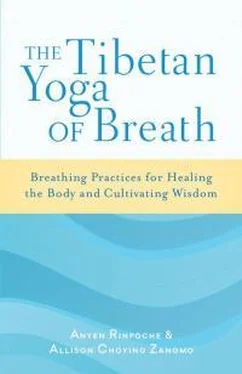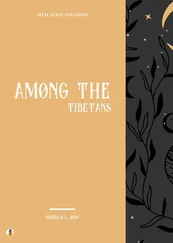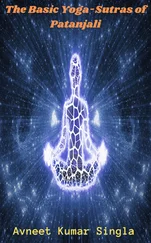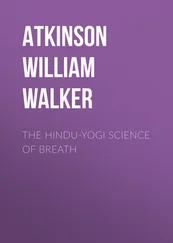The teachings on Yantra Yoga explain in detail the manner in which the purification of the breath acts as the cause for healing body and mind and, ultimately, for spiritual realization. The breathing practices of the Yantra Yoga tradition are referred to as “wind energy training” throughout this book. The basis for these practices is introduced in part 1, and the practice of wind energy training is introduced in greater detail in part 2.
I grew up in the suburbs of Denver, Colorado, as an ordinary, middle-class girl. Most of my childhood was spent feeling caught between two worlds. My yearning for a contemplative lifestyle existed in contrast to a society that believes in material wealth, status, and power as the ultimate measure of success. As a result, I experienced isolation, anxiety, and sleeplessness. My traditional American childhood gave me few tools to help me deal with these feelings. I was introduced to meditation and contemplative practice at the age of sixteen, after which I began practicing meditation seriously. I finally felt I had connected with the thing that was missing in my life. In my early twenties, I traveled to Tibet and then Nepal, where I met Anyen Rinpoche and became deeply involved in the contemplative and devotional practices of Tibetan Buddhism.
Although I am a committed practitioner of the Secret Mantrayana tradition, I do not take lightly the discipline and diligence required to engage in many of its practices. Because of its strenuous asana poses, I have never thought of Yantra Yoga as a tradition I was capable of practicing. And tales of Anyen Rinpoche’s own story of training in the middle of winter seemed magical and otherworldly to me, and completely out of my reach. However, as my understanding of Vajrayana practice has grown over the years, I began to learn some of the breath practices from the Yantra Yoga tradition that immensely improved my mental and emotional stability, as well as augmented my physical health. These were aspects that even I, an ordinary practitioner, could learn, use, and benefit from. I noticed a change in my ability to balance my body and mind in daily life situations, and I began to feel more comfortable with my ability to adapt to all kinds of environments and to work more compassionately with others.
As I prepared to write this book with Anyen Rinpoche, I delved into the medical research that has been done on the subject of the breath and on the health benefits of bringing the proper amount of oxygen into the blood, with the assistance of my Vajra Sister Sarah Teague Johnson. I was amazed by how the yogis of India and Tibet, prior to the invention of modern technology or research instruments, gained a thorough knowledge of the effect of the breath, proper and improper, on our physical, emotional, and spiritual health. Not only did these classic masters understand the problems caused by improper breathing in a way that perfectly corresponds to modern medical science, but they also knew how to remedy these problems with very simple techniques. These breathing “treatments” and “cures” are as easy as working with posture, nasal breathing, and the elongation of the inhalation and exhalation. The benefits of these contemplative techniques can also be explained with a detailed understanding of medical science. How remarkable that the masters of old could have knowledge that is so true, so exact, and so pertinent to our health in the modern world.
In this book, we have attempted to offer the most useful information for those interested in starting to practice wind energy training, using medical science as a starting point. Yantra Yoga, with its rich oral and textual tradition, has its own parallel way of describing the negative effects of oxygen and carbon dioxide deprivation on the body, mind, and emotions. By weaving together the knowledge of these two sources, the modern and the mystical, we hope many readers of this book will be inspired to start working with the tradition of wind energy training.
Of course, this book offers only the most basic of teachings on wind energy training, those that are appropriate for any individual to start applying. For anyone who wishes to delve into deeper training and more detailed instructions than a book can provide, the importance of seeking out an authentic spiritual master cannot be overstated. An authentic teacher who has had a lifetime of training in Yantra Yoga and has become the close student of a master of this tradition will be able to give proper and complete instructions on this practice, and point out mistakes and pitfalls. In the West, we are used to thinking that a teaching-certification program is enough to make us a master at something, since it confers a license to teach others. While this may be true of some subjects, wind energy training is definitely not one of them. True proficiency and skill is not gained in a few weeks or a few months. A few classes or retreats do not make a master!
While I do not claim to be a great practitioner of meditation, I have found that many of the physical and emotional conditions that I suffered from earlier in life, such as anxiety, migraine headaches, and chronic lung conditions, have disappeared since I began working with meditation, mindfulness, and the breath. I am not surprised to find that all of these conditions are associated with improper breathing and a lack of balance between the oxygen and carbon dioxide in the blood. Meditation has not only helped to quiet my mind, it has also naturally brought greater balance to my wind energy, which has helped to heal many of the imbalances in my physical and mental health.
I would like to be clear that we, the authors of this book, are not doctors. We believe in taking a holistic approach to the treatment of any physical, mental, or emotional imbalance. We believe that a combination of factors—working with wind energy training, practicing meditation, exercising, paying attention to diet and nutrition, following the advice of health care practitioners, and using Western and natural medications when necessary—is the most effective way to treat any imbalance. We urge you not to stop any treatment plan that you are currently following, but instead to add wind energy training to your current treatment plan. As you find greater balance in body and mind, you will be in a better position to evaluate or make changes to your overall wellness program.
In this modern world, so afflicted by famine, war, weaponry, genocide, and the swift and unknown effects of technology, how lucky we are that we have available the guidance of many rich spiritual traditions! May the teachings in this book alleviate the suffering of beings everywhere.
ALLISON CHOYING ZANGMO
PART ONE
Why We Practice Breath Yoga
1
Breath Is Life
The Physical and Elemental Workings of Breath
AFTER THE CONSCIOUSNESS enters the mother’s womb, the greatest support and condition for life is the breath. In this case, when we speak of the breath, we are not only speaking of the ordinary inhalation and exhalation of oxygen and carbon dioxide but we are also talking about the air element—one of the fundamental elements of life. Great classical philosophers such as Plato and Aristotle described the phenomenal world using the framework of the four elements: air, fire, water, and earth, and their harmony or discord. Like Western philosophy, the ancient traditions of Eastern philosophy, medicine, and meditation all place importance on the qualities and harmony of the four elements. The general Sutric tradition of Buddhism names the four elements and their properties as cohesion (water), solidity or inertia (earth), expansion or vibration (air), and heat or energy (fire). Tibetan Buddhist philosophy names five elements: air, water, earth, fire, and space. The fifth element, space, is uniquely important because it is the quintessence of all phenomena; space pervades all material phenomena, and makes it possible to recognize form. Space, conversely, is also the absence of form.
Читать дальше












